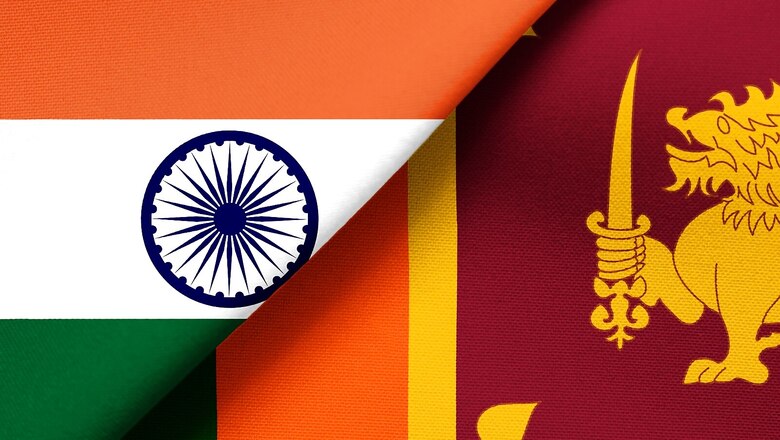
views
Even as Sri Lankan Parliament was debating the annual budget presented by Finance Minister Basil Rajapaksa, he flew off to New Delhi, for a two-day visit on December 1, to seek urgent help from India to ward off an impending economic collapse of the country. This drew a sarcastic comment from former Prime Minister Ranil Wickremesinghe. Speaking in Parliament he said, “We have had past Presidents, who have also served as finance ministers parallelly, but they have always attended the Budget debates. We have never seen finance ministers leaving the country while crucial public finance matters are discussed. Our finance minister went to India and came back. We don’t know if he went to beg from India as well.”
But Basil Rajapaksa had no other option but to seek urgent help from India as Sri Lanka’s net foreign exchange reserves have plunged to an all-time low of $1.2 billion, barely enough to pay for a month’s imports. The unprecedented shortage of essentials from oil to rice to cereals and medicines was making people restive. The Sri Lankan minister probably came with a lot of expectations, because India in the past had met such requests from Sri Lanka to meet not only critical requirements of food grains, medicines and petroleum resources, but also to assist in debt servicing.
In contrast to China, which of late has gone public to express its displeasure on some of the actions of Sri Lanka, India under Prime Minister Narendra Modi has never publicly aired its misgivings, even when the Rajapaksas had disregarded India’s sensitivities on critical issues affecting its interests. Instead, India chose to convey it through diplomatic channels.
The visiting Sri Lankan minister had two rounds of talks with his Indian counterpart, Nirmala Sitharaman, and External Affairs Minister S. Jaishankar. He also met with the Minister for Petroleum and Natural Gas Hardeep Puri and the NSA Ajit Doval. But curiously, though Sri Lanka media had said he would be meeting Prime Minister Narendra Modi, such a meeting never took place. A charitable view of it could be, the Indian PM’s schedule loaded with international and domestic political engagements could not accommodate the meeting.
According to the SLHC press release on the visit, the two sides discussed “four pillars for short- and medium-term cooperation”. However, in reality the “four pillars of cooperation” are “four streams of resuscitation” for Sri Lanka state. The four pillars are a mix of four packages for India’s financial support and investment. Urgent supply of food and health security ‘package’ on an extended line of credit takes priority perhaps to ward off food riots and the fall out of the COVID-19 pandemic. Energy security package for import of fuel from India on an extended line of credit comes next, as the country’s petroleum stocks are drying up. Perhaps, to make it attractive to India, it has been tagged with the dusting up of a long forgotten Indian offer for modernisation of Trincomalee tank farm. Facilitating Indian investments in different sectors in Sri Lanka figures last.
The SHC statement further added, “It was agreed that modalities to realise these objectives would be finalised early, within a mutually agreed timeline. Minister Rajapaksa and ministers Sitharaman and Jaishankar agreed to open direct lines of communication and to be in direct and regular contact with each other in order to coordinate the above initiative.”
Shorn of such frills, Basil’s ‘Mission New Delhi’ could be described as “work in progress”. In military terms familiar to the veteran President Rajapaksa, the mission status would be described as SNAFU — “situation normal, all fouled up”. This is evident from the finance minister’s humble speech in parliament on his return from India.
In normal circumstances, the Rajapaksa government would have sought China’s help as in the past; it already owes China around $5 billion. But, of late, China has become a no-go area, after Sri Lanka reneged on organic fertiliser import deal worth over $48 million with China, when fertiliser samples were found to be contaminated with harmful pathogens. Now the disputed deal is facing arbitration proceedings in Singapore and Colombo. To add insult to injury, Sri Lanka imported liquid nitrogen fertiliser from India to tide over the shortages. The relations between the two countries appear to have worsened further after Sri Lanka appeared to be having second thoughts over developing hybrid energy systems in three northern islands of Sri Lanka by Sino Solar Hybrid Technology. The Chinese embassy in Colombo has tweeted that the projects have been suspended due to third-party intervention, presumably referring to India. India had expressed its concern at Chinese involvement in this project in locations barely 43 km from its coastline.
India can bail out Sri Lanka as in the past with currency swaps and exports of essential goods including petroleum. Even in the midst of the pandemic, India’s forex reserves have gone up from $ 478 billion last year to $577 billion this year, through some smart fiscal management.
So, India has the money, but does it have the inclination to come to the aid of Sri Lanka, particularly after Rajapaksas in power have repeatedly shown to favour China? Does India’s lack of readiness to immediately respond to Sri Lanka’s request show it is tired of being taken for granted by the island neighbour?
These are legitimate questions in the Indian mind, if we look at the past. Prime Minister Ranil Wickremesinghe signed a memorandum of understanding (MoU) with India during his visit to New Delhi in April 2017. Its focus was mainly on promoting time-bound projects in energy, infrastructure connectivity and port development structures with Indian assistance and investment in Colombo and Trincomalee areas as well as road segments mostly in Northern Province. The projects included a liquid natural gas (LNG) fired 500 MW power plant, an LNG terminal/floating storage re-gasification unit in Kerawalpitya, 50 MW solar power plant in Sampur, joint development of upper tank farm in Trincomalee, port, petroleum refinery and other industries in Trincomalee, and development of Mannar-Jaffna, Mannar-Trincomalee and Dambulla-Trincomalee expressways with Indian investment, among others.
India’s offer has been ignored in most of these projects, when they came up for consideration. Projects under this MoU have now been offered piecemeal to others. Through this MoU, India hoped to team up with Japan to substantially contribute to the development of industries and infrastructure links in the North and East, which would have speeded up the regions to integrate with the rest of Sri Lanka.
The COVID-19 pandemic has almost killed the tourism industry, the country’s main foreign exchange earner. Chances of its revival look bleak with the appearance of Omicron mutant in the scene. Remittances from Sri Lankans working overseas have dwindled. When President Gotabaya Rajapaksa assumed office two years back, he inherited an economy already mauled by mismanagement by successive governments. Implementation of his own lofty ideas on food self-sufficiency through organic farming and clean energy, suited for normal times, has crippled agriculture production and tea industry adding to economic woes. Under these circumstances, China’s lack of interest in further investing in Sri Lanka is understandable. It has happened in Pakistan also.
PM Mahinda Rajapaksa has decided “Prosperous Motherland that Overcomes Challenges” as the theme for the 74th Independence Day celebrations on February 4, 2022. To make it a reality, India’s helping hand is a must. To gain that Sri Lanka must perhaps show a little more sincerity and walk the extra mile.
The press release on Basil’s visit did not contain any reference to India’s political and national security concerns, which had figured during the visit of almost all Indian dignitaries to the island, from PM Narendra Modi to ministers of external affairs and defence chiefs. These include fulfilling the promises President Mahinda Rajapaksa made during the Eelam war to implement in full 13th Amendment of the constitution, as a part of achieving ethnic amity.
Seventeenth century Dutch philosopher Spinoza’s rather cynical statement “big fish eat small fish with as much right as they have power” comes to mind when Sri Lanka finds itself in the middle of a big power contest in the Indian Ocean, now part of the Indo-Pacific strategic domain. This is more so after India and China are flexing their muscles, after their relations went south in 2020. It would be prudent for Sri Lanka to bear in mind when dealing with China. Under President Xi Jinping, China is more likely to expand its domain in Sri Lanka in the coming year. India is here, closer geographically, as part of the family of South Asian nations, more accessible in contrast to China. But India is showing signs it cannot be taken for granted, one can only hope Sri Lanka notices it.
The writer is a retired MI specialist on South Asia and terrorism and insurgency. He was the head of intelligence of the Indian Peace Keeping Force in Sri Lanka from 1987 to 1990. The views expressed in this article are those of the author and do not represent the stand of this publication.
Read all the Latest Opinions here










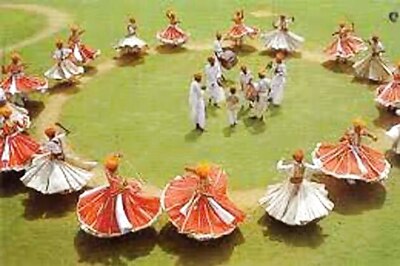




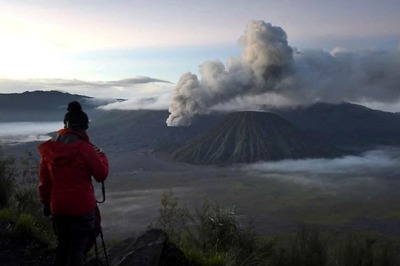

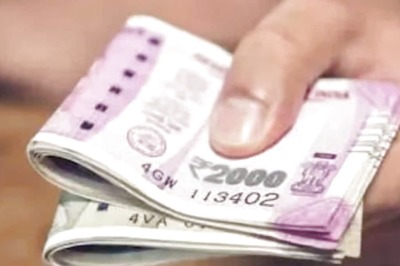

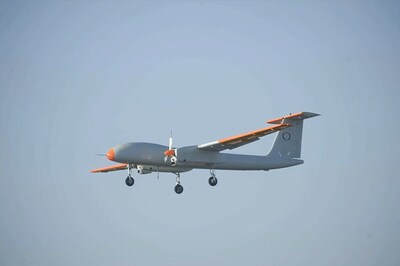
Comments
0 comment